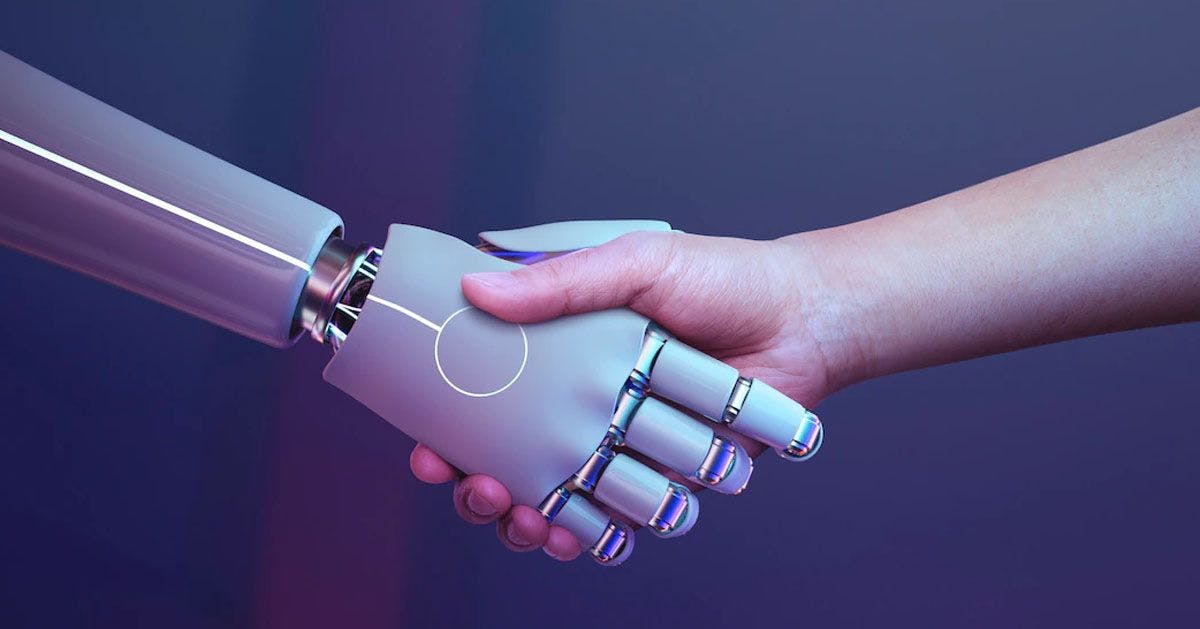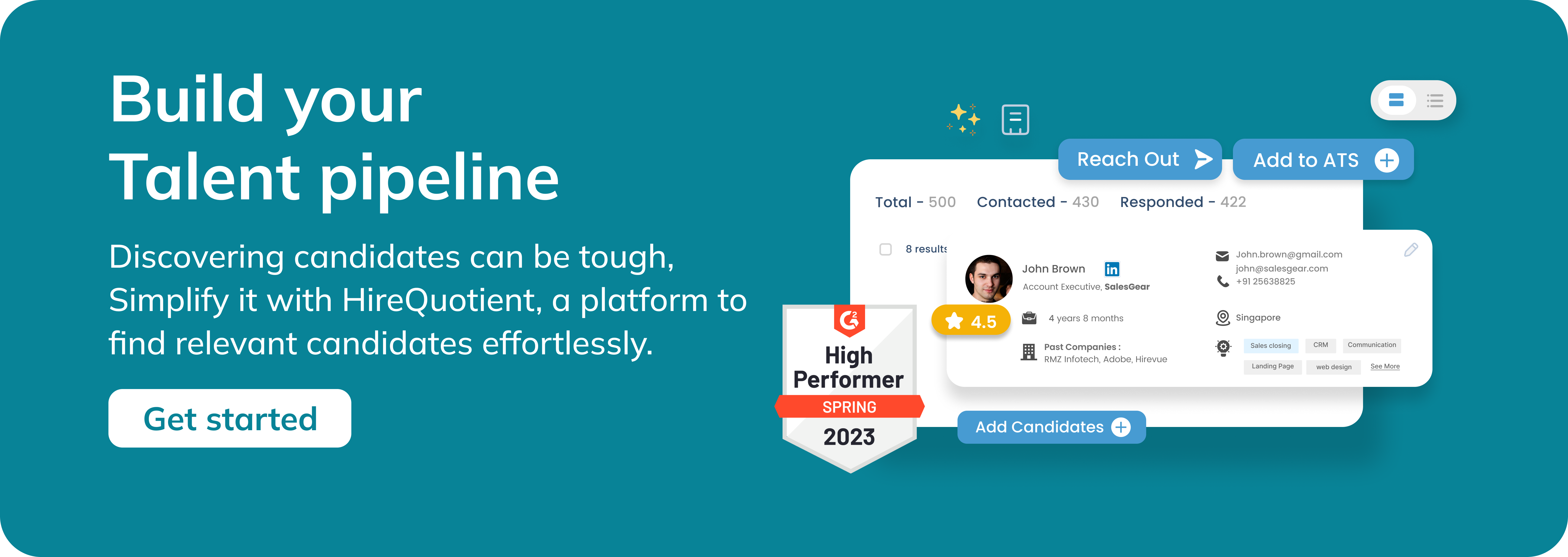HR Digital Transformation: How Does It Help You in Reducing Hiring Time & Cost?
Published on November 2nd, 2022
There are no boundaries when it comes to digital transformation in the workplace. It’s made its way across industries and dispersed workforces. And, now, the HR digital transformation has arrived.
The challenging labor market is motivating organizations to evolve their human resources approach. Businesses need a digital HR strategy with solutions built for automation, engagement, and monitoring analytics.
Here’s everything you need to know about the digital transformation in human resources.
What is HR digital transformation?
Traditional HR processes rely on face-to-face communications, filing cabinets, and paperwork. Lots of paperwork – for everything from payroll, attendance systems, and performance management to candidate management and onboarding.
HR digital transformation includes moving those processes to technology-based systems. But technology isn’t the be-all and end-all of the transformation. Nor is it the place to start.
In the simplest of terms, digital transformation of human resources entails the adoption of digital human resource tools, practices, and strategies to boost employee experiences and optimize operational performance using data-driven, automated practices. There are two sides to the digital transformation of HR: on one side they switch up HR operations using technology, and in the process transform the workforce and how things are done in the workplace.
Successful digital transformation of human resources won’t just optimize HR processes. If done right, it should have a holistic effect and improve the organization as a whole.
However, it is easy to confuse this with things like digitization or the digitalization of HR. This will make it easier to remember what makes them all different:
Digital Transformation:
Using digital tools to implement a digitalization strategy that aims to improve employee, customer, and user experiences.
Digitization:
Converting manual paper-based processes into digital ones: instead of a manual log, you use a digital app
Digitalization:
Digitalization uses technology to change a business model and create new revenue opportunities
The Why of HR transformation
First things first. As a rule of thumb, any HR transformation, whether it is a digital one or not, has to take place with a clear objective in mind. It has to make business sense.
Companies still appear to succumb to peer pressure all too frequently; since all of their rivals "go digital," they feel that they must follow them. However, digitizing HR procedures only for the sake of doing so is never a wise idea. It results in the adoption of (expensive) technology that falls short of the company's actual requirements. This obviously completely defeats the goal of a transformation.
Benefits of HR digital transformation
Rather than just increasing efficiency, HR activities can be transformed to have a significantly broader impact. In actuality, the advantages are felt by all organization stakeholders, including staff members, managers, the C-Suite, and, of course, the HR division.
Here are the top 10 benefits we see across the globe:
1. Higher talent retention
Lack of opportunity for advancement is one of the main factors in people quitting an organization. People want to grow in their professions, and when businesses demonstrate that they care about employees' careers, exceptional employees are more likely to stay with the company longer, lowering recruitment expenses.
2. Stronger alignment between company strategy and people management
Businesses can better align themselves with the company strategy with the aid of business intelligence tools like workforce planning and people data. For instance, data could help an organization decide which employees already have the necessary abilities or which ones need to be upskilled in order to reach a new objective like expanding into a new set of services.
3. Better decision-making with accurate data and information
We have learned the value of data-driven decision making from the Covid-19 debacle. The strength and analytical prowess of technology provide HR with all the data they need to make wise decisions to boost employee productivity, efficiency, and effectiveness.
4. Increased employee satisfaction
Numerous studies have shown that happier employees are more productive than dissatisfied ones. Organizations experience this sense of accomplishment and purpose when they show how valuable their personnel are through optimized operations.
5. Lower HR costs
Organizations that invest in digitizing HR over time save a ton of time and money because processes are streamlined and improved. Additionally, you can improve internal mobility and lower the cost of external recruitment by having visibility across your whole staff.
6. Automation of manual processes
Numerous administrative duties can be automated, reducing the possibility of human error and improving the management of crucial factors like compliance. The HR team may then concentrate on projects that are strategic and have the most business benefit.
7. Improved visibility over the workforce
Having visibility over a workforce that is spread out among several sites might be challenging. Technology, on the other hand, links disparate systems and gives you total visibility over your workforce. This visibility can also be given to managers, who can then focus on things like the teams' training and skill requirements.
8. Consolidated HR systems
Consolidating entails a unified source of truth and a consistent user interface. Employees are more likely to engage and finish activities without jumping between programs or being perplexed by functionality if there is a single platform for all of their HR needs.
9. Advanced analytics and improved reporting
Advanced analytics may demonstrate the value of HR's efforts and assist the team in being audit-ready in addition to providing insights. By leveraging current data to predict future behavior, machine learning can further automate tasks, such as pushing learning to employees based on others' preferences.
HR digital transformation case study
Challenge
HSBC, a leading global bank, wanted to improve their employee experiences and deliver enhanced services. In order to deliver on its strategy, HSBC was committed to improve shareholder returns and enhance customer service via global transformation to help the bank modernize and digitize its services.
What Accenture did?
HSBC turned to Accenture where they provided the bank with
- Program management
- Change management
- Experience design
- Global process and configuration design
- Localization to meet country regulations and legal requirements
- Integration with other HSBC and vendor systems
- Data mapping and migration
- Service introduction
- Implementation and go-live management
- Post-go-live support
Digital HR technologies from SAP, ServiceNow, and MuleSoft helped HSBC improve the employee experience. With SAP SuccessFactors, an integrated, cloud-based HR software program, legacy HR performance and compensation systems, manual processes for talent and succession management, and payroll were all replaced.
Through the use of a digital portal, knowledge management, and case management, ServiceNow introduced a layer for employee engagement. MuleSoft offered a safe and flexible solution to securely and efficiently combine several HSBC applications, data, and devices from around the world.
Transformation
In order to empower its staff and generate value for customers and shareholders, HSBC has modernized its HR services and employee experiences.
People at the bank can more easily locate what they need, make data-driven decisions, and access HR material, services, and support thanks to digital HR services. The majority of services have been enhanced, ranging from fundamental ones like payroll, workforce administration, employee data management, and communications to brand-new tools that let staff members and executives better oversee talent, succession, career development, and performance. Leaders will be better able to utilize the bank's talent and make better decisions regarding their teams and employees thanks to improved access to data and insights.
How to get started with HR digital transformation roadmap
The goal of digital transformation is to create an agile HR function that is digitized end-to-end. However, it requires a structured approach to achieve this end.
The five steps to build a HR digital transformation roadmap are:
1. Know the goal you’re going after
You must first decide what your company needs and wants. Think about whether your ultimate objective will be simple, attainable, and financially viable. Let's imagine, for instance, that you've resolved to support remote workers more effectively. Your end goal can be to offer a single piece of powerful software that doesn't require any costly add-ons.
2. Involve your team
The core of your HR digital transformation is your people. They are necessary for it to function or even survive. An anonymous staff survey could be used to identify the areas where a digital transformation will be most beneficial.
Consider the needs of your Gen Z team members when educating your staff to use new software. Ask members of Generation Z to train older workers if you have a workforce with different generations. Additionally, before selecting software, make sure it offers decent, accessible customer assistance.
3. Investigate your current performance
Technology is continually improving. Search engine optimization (SEO) is a subject that shifts frequently. Numerous daily blogs find it challenging to track and stay current with SEO developments. It might be difficult to keep up with change.
4. Always test your online tool
Consider how many technologies are required to transform your HR department before deciding to automate your routine chores. Costs, as previously indicated, can be a problem. You might not need to replace your current PCs if you use the proper internet tool.
For a predetermined fee, for instance, you can access specialized software online. Additionally, the monthly cost can be less than the cost of 10 cappuccinos. Always try a software package out before purchasing.
5. Keep it Simple
HR employees are not usually versed in computer programming languages.
In terms of simplicity, a solution might be to choose an accessible product that is no-code. You then do not require computer programmers to be present. The process then remains singular.
It’s also easy for the process to become diluted and fragmented. As we mentioned before, a single solution is best with software. Think quality over quantity.
Wrapping Up
Not to finish on a heavy note, but whether you like it or not, an HR digital transformation isn’t optional. In a world that’s digitalizing at a fast pace, with consumer-slash-employees that don’t know any better than for virtually anything in their lives to be digital, HR and employers simply can’t stay behind.
Digital transformation aims to create an agile organization that is ready to change as technology keeps advancing. Technology will always be ahead of the curve as organizations try to catch up. The absence of this agility can be one of the reasons why digital transformation strategies fail.
What you as an HR professional can do is prepare your organization and your team to remain engaged in this process, and adopt technology at its peak, optimally. For that, you need to be prepared yourself. Stay aware, stay current, and ensure that you know what your competitors are doing in the same area.
Authors

Radhika Sarraf
Radhika Sarraf is a content specialist and a woman of many passions who currently works at HireQuotient, a leading recruitment SaaS company. She is a versatile writer with experience in creating compelling articles, blogs, social media posts, and marketing collaterals.

Hire the best without stress
Ask us how
Never Miss The Updates
We cover all recruitment, talent analytics, L&D, DEI, pre-employment, candidate screening, and hiring tools. Join our force & subscribe now!
Stay On Top Of Everything In HR

